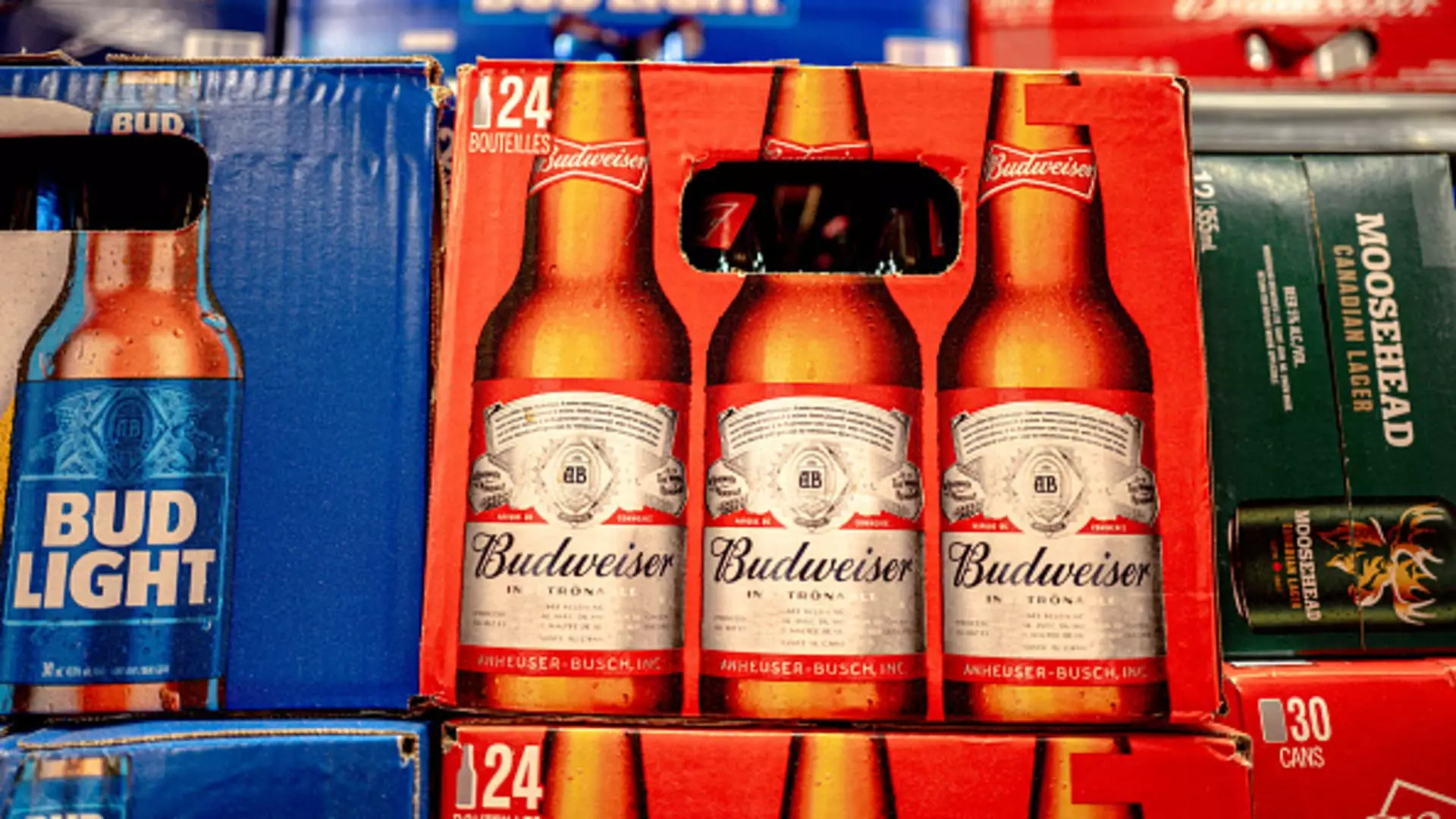AB InBev, the largest brewing company globally, recently experienced a significant surge in its stock price, reflecting a robust performance in the fourth quarter despite some challenges in volume sales. The company reported a remarkable 3.4% increase in revenue, amounting to $14.84 billion, outpacing analysts’ expectations of a mere 2.9% decline in revenues, which would have brought it to about $14.05 billion. This unexpected growth showcases AB InBev’s potential to navigate through turbulent market conditions, particularly in regions like China and Argentina, where consumer demand has been weak.
Despite the positive revenue figures, it’s crucial to address the decline in overall volumes, which fell by 1.9% in the fourth quarter and 1.4% throughout the year. This decline signals shifting consumer preferences and market dynamics that AB InBev needs to adapt to. The CEO, Michel Doukeris, recognized these downturns as “very abnormal,” hinting at the industrial state that affects consumer sentiment. It’s worth noting that the core of this decline stems primarily from decreased sales of traditional beer products, suggesting a strong pivot in consumer habits towards other beverage options.
The evolving landscape of consumer preferences presents both challenges and opportunities. While AB InBev grapples with falling beer volumes, non-beer offerings like Cutwater Spirits and Brutal Fruit Spritzer are gaining traction. This nuanced shift toward alternative beverages reflects broader market trends, where health-conscious consumers are increasingly favoring lower-alcohol or non-alcoholic options. Notably, Danish competitor Carlsberg has diversified significantly, with nearly one-third of its product line now consisting of non-alcoholic drinks, which could prove to be a strategic move to enhance resilience in a fluctuating market.
Doukeris acknowledges this “global trend” towards alcohol moderation, asserting that non-alcoholic products are enhancing accessibility for a broader range of consumers. The ability to attract health-conscious consumers may mitigate some declines in traditional beer sales and encourage drinking in varied contexts, further increasing market engagement.
As AB InBev looks to the future, several potential challenges loom. Notably, foreign exchange implications concerning the strong dollar have emerged as a primary concern for 2025, indicating that currency fluctuations could hinder profitability. Despite these concerns, Doukeris remains optimistic about strategies that can be employed to offset potential cost increases, reflecting a proactive approach to navigating economic headwinds.
Moreover, the company’s medium-term outlook anticipates growth in earnings before interest, taxes, depreciation, and amortization (EBITDA) between 4% to 8%. This projection follows a notable EBITDA rise of 10.1% in the last quarter and an 8.2% increase throughout the year, demonstrating that underlying profitability remains strong despite volume challenges.
In an industry where consumer habits are in constant flux, AB InBev’s ability to adapt to marketplace exigencies will be critical. The company’s commitment to monitoring market trends and altering its offerings accordingly will be pivotal in sustaining growth. Doukeris’s assertions reflect an understanding of the necessity to innovate while providing opportunities for expansion, particularly in non-alcoholic segments.
While the recent financial results paint a promising picture for AB InBev, it remains imperative for the company to navigate the complexities of changing consumer preferences and international market dynamics. The agility with which AB InBev approaches these challenges will determine not only its near-term success but also its long-term viability in the evolving beverage landscape. Addressing the decline in beer sales through diversification and innovation will be essential as the company strives to maintain its position as a global leader in the brewing industry.

